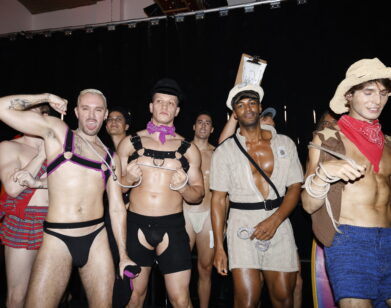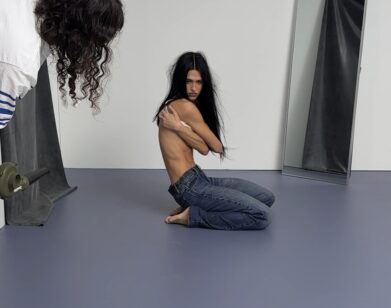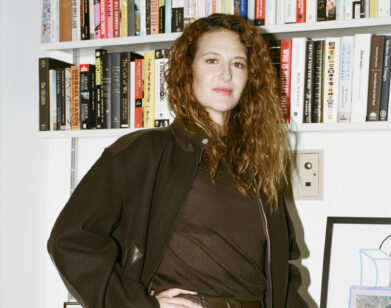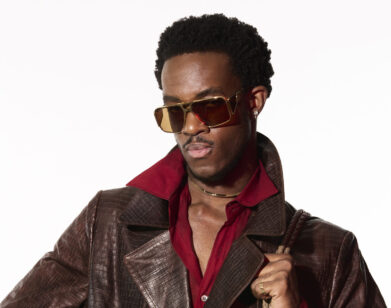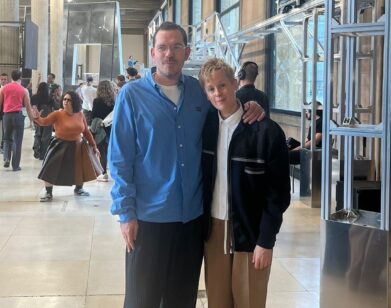MIT Professor Neri Oxman Is As Otherworldly As Her Creations

Photo courtesy Noah Kalina, 2017
To spend an afternoon with Neri Oxman is to find yourself on a sort of acid trip. Your guide is an MIT professor with a mane of dark hair and a bright, cheery disposition. In her presence, reality, with its brute force and clumsy machinery, fades away entirely, and a new world rises up in its place, one in which homes are woven by teams of silkworms, skyscrapers can breathe, and airplanes aren’t built from parts, but are “grown, like organs.” This is the world of Neri Oxman: unimaginable feats of design and engineering are not simply realized, they exist as mesmerizing objects of art that represent a future most of us can barely fathom.
Oxman, who is known for her mesmerizing structures that represent the intersection of biology, design, and engineering, recently sent a box of bees —15 or 20 of them—to outer space as part of the Jeff Bezos-funded Blue Origin Mission. She also pioneered the field of Material Ecology at MIT’s prestigious Media Lab. But for those of us without STEM degrees, the power of Oxman’s innovations are best accessed through her artwork. As part of Wanderers, a collection of 3D-printed wearables designed to secure our survival in outer space, Oxman and her team created Mushtari, a corset-like organ system filled with technicolor substances that convert sunlight into consumable sucrose. For a 2016 performance in Tokyo, Oxman designed a 3D-printed mask for her friend Björk that mimicked the muscle and tissue alignment of the Icelandic artist’s own face.
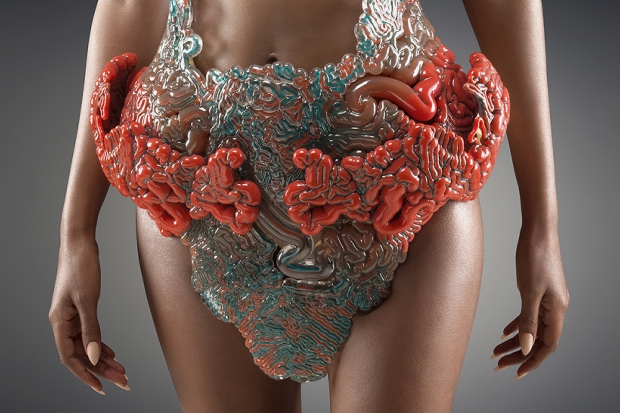
‘Mushtari,’ Photo courtesy Neri Oxman and the Mediated Matter Group
Last month, the Museum of Modern Art opened its “Material Ecology” exhibition to showcase the achievements of Oxman and her team of students. Though the MoMA is currently closed, the exhibition opens for virtual viewing on May 14th (in the mean time, visitors can augment their visual experience of each gallery with Oxman’s own audio description of its implications on the future of design). The exhibition showcases the materials (chitin from the shells of crustaceans, melanin from horse hair) and processes (3D printing, silkworm weaving) that could one day be incorporated in the practices of architects and designers. In keeping with her devotion to natural processes, no object in the exhibition is constructed from parts—each is grown as a single object.
As we part with the illusion of the world returning to normal any time soon, Oxman’s work takes on a deeper resonance. “We, as architects of the built environment, are entering an era where we’re designing for survival,” she says. The future she envisions? “Of course, concrete, glass and steel aren’t going anywhere anytime soon, but our buildings should breathe, sweat and think.”
———
VEITCH: Your work harnesses the properties of objects like apple cores, moss, and crab shells. Most people would never dream that these things could be the future of design and architecture. What is the creature that you envy most?
OXMAN: I’m quite envious of the queen bee and her retinue that we sent to outer space with Jeff Bezos’ Blue Origin project. We designed a wet lab environment that could support her in microgravity, as well as 20 bees that would serve her needs, metabolically and otherwise.
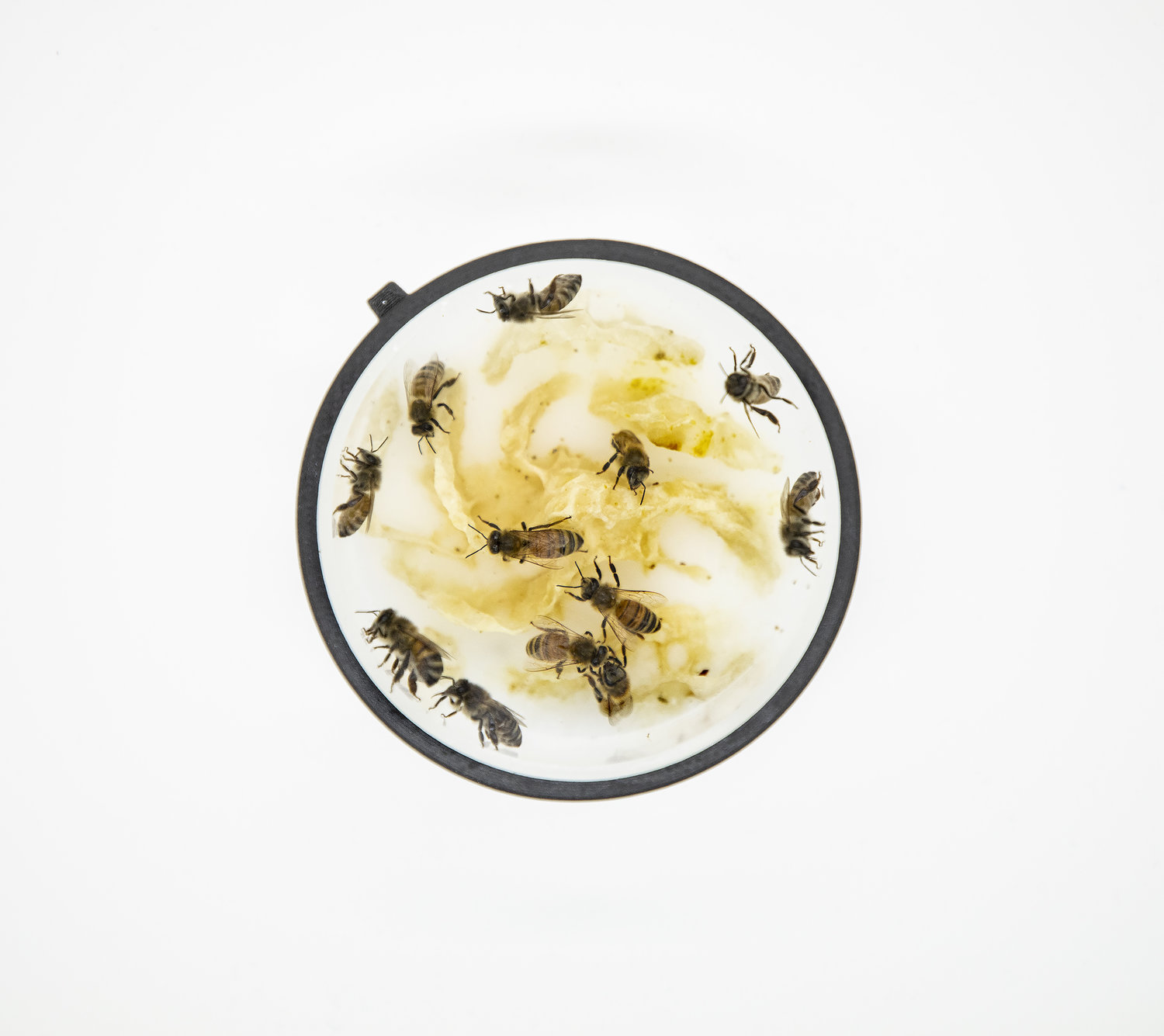
Photo Courtesy Mediated Matter Group.
VEITCH: Will there be space honey?
OXMAN: There will be space honey. We’ve done a lot of work with bees as part of the Synthetic Apiary [completed 2017], but that project is not a part of the MoMA exhibition. They’re such fascinating organisms because of their social behavior, and their ability to build as a team.
VEITCH: Has your work led you into any surprising situations?
OXMAN: So many, every day. I was sent to the Zero G simulator down in Florida. We were floating mid-air in microgravity. After giving birth, that was one of the most thrilling experiences of my life.
VEITCH: Probably very different sensations.
OXMAN: Very different. Being suspended, just thinking about spending time in my own mother’s belly, floating in water. But the experience of floating in air is so very different. It reminds me that our team’s work requires a suspension of disbelief. I think the exhibition requires you to do that as well. When you suspend your disbelief—about what is possible, what our built environment can look like and how it can work—then you can enter the gallery. If you do that, you leave with innocence and wonder. If not, you’ll be like, ‘Wait, what am I doing? This is insane!’
VEITCH: Is there an everyday object that you’d like to completely reimagine or redesign?
OXMAN: I’d love to grow a car engine.
VEITCH: Like an organ, kind of?
OXMAN: Like an organ. During one of the first talks I gave as a student, I compared a car engine to an orchid: the two systems are so different. One is a group of parts, you put them together to create the engine. With an organism or an organ, the whole is bigger than the sum of its parts. That’s really what our work is about at its core. We need to create machines like organisms: cars, airplanes, buildings.
VEITCH: Those brutal machines that we all see all the time.
OXMAN: Right. It would be amazing to kind of revisit modernism through synthetic biology.
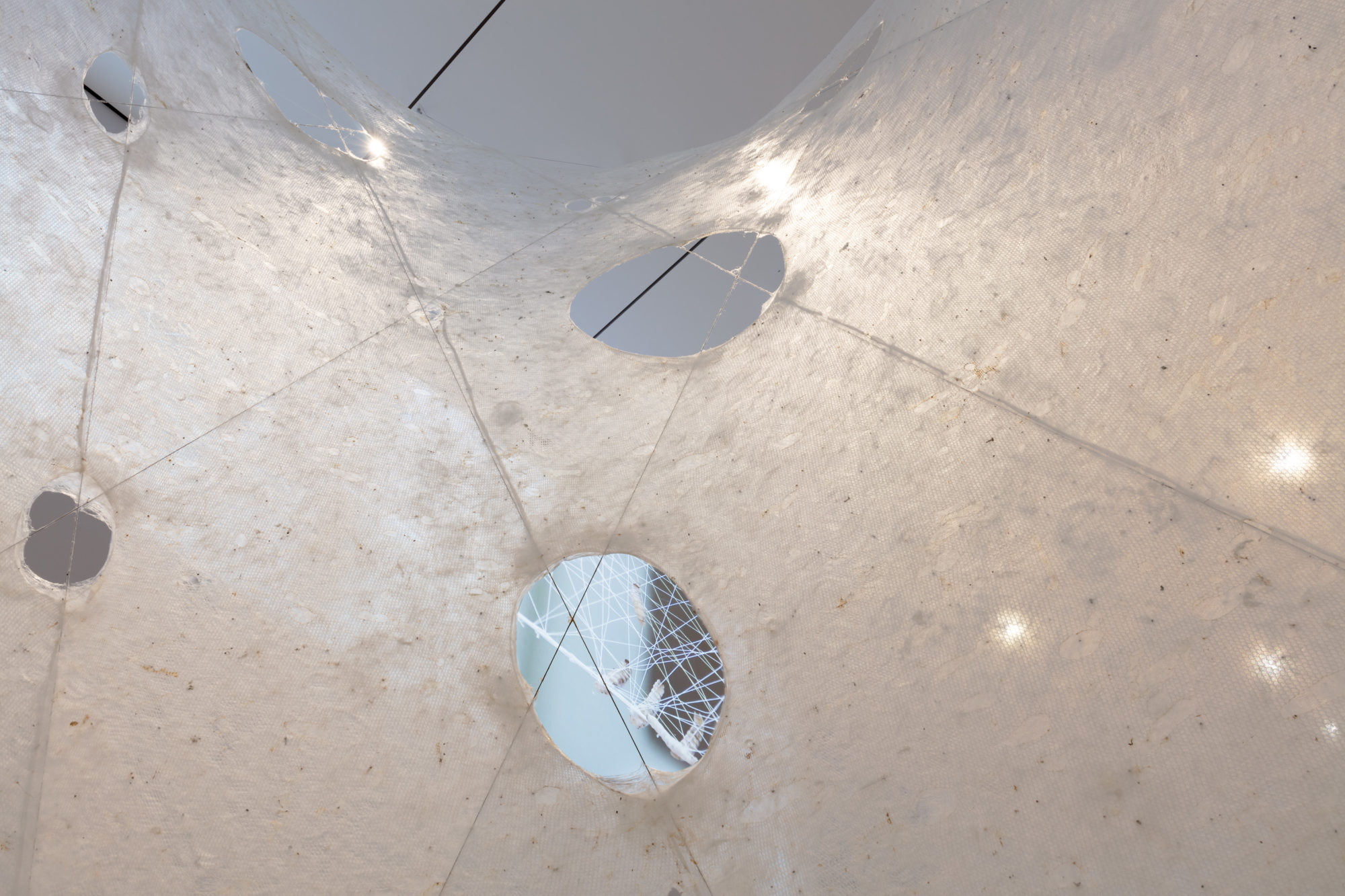
‘Silk Pavilion ll,’ Photo Courtesy The Museum of Modern Art.
VEITCH: I want to talk about your wearable pieces. They’re obviously fascinating and beautiful to look at, but there’s also something sort of scary about them. I don’t really know why that is, but they’re…
OXMAN: Eerie.
VEITCH: Exactly. It’s eerie to see something that’s always inside our bodies created outside of us. Could you describe your influences? Are you a spooky person?
OXMAN: [Laughs] I adore H.P. Lovecraft if that means anything. At the Mountains of Madness is one of my favorite pieces of literature. Edgar Allan Poe is a hero of mine as well. I’m just realizing now, that they certainly enter and exit the projects when they need to.
VEITCH: And what inspires you stylistically?
OXMAN: I think there’s a difference between style and taste. Taste is like an instinct. I like to think of design as the active form of taste. It’s very important to us that our projects yield wholes that are bigger than the sum of their parts. They have spirit, they have soul.
VEITCH: You worked with Björk to create a mask for her 2016 tour. What was it like to collaborate with her?
OXMAN: I adore and love her. Meeting Björk was like meeting an old friend for the first time. We sort of share a mind, she and I. A similar passion for seeking the right kind of wrong, as Miles Davis said. We both embrace, or live very well, with ambiguity. So that first meeting was actually quite emotional.
VEITCH: What do you think made you such good collaborators?
OXMAN: The way she thinks about music as an art form aligns with my taste in design. In her work, it’s difficult to separate the score from the visuals from the various other mediums that she uses. All these elements come together in a way that feels grown as opposed to machine-made. I hope that the same is true of my work. So, there was a shared aesthetic and way of thinking.
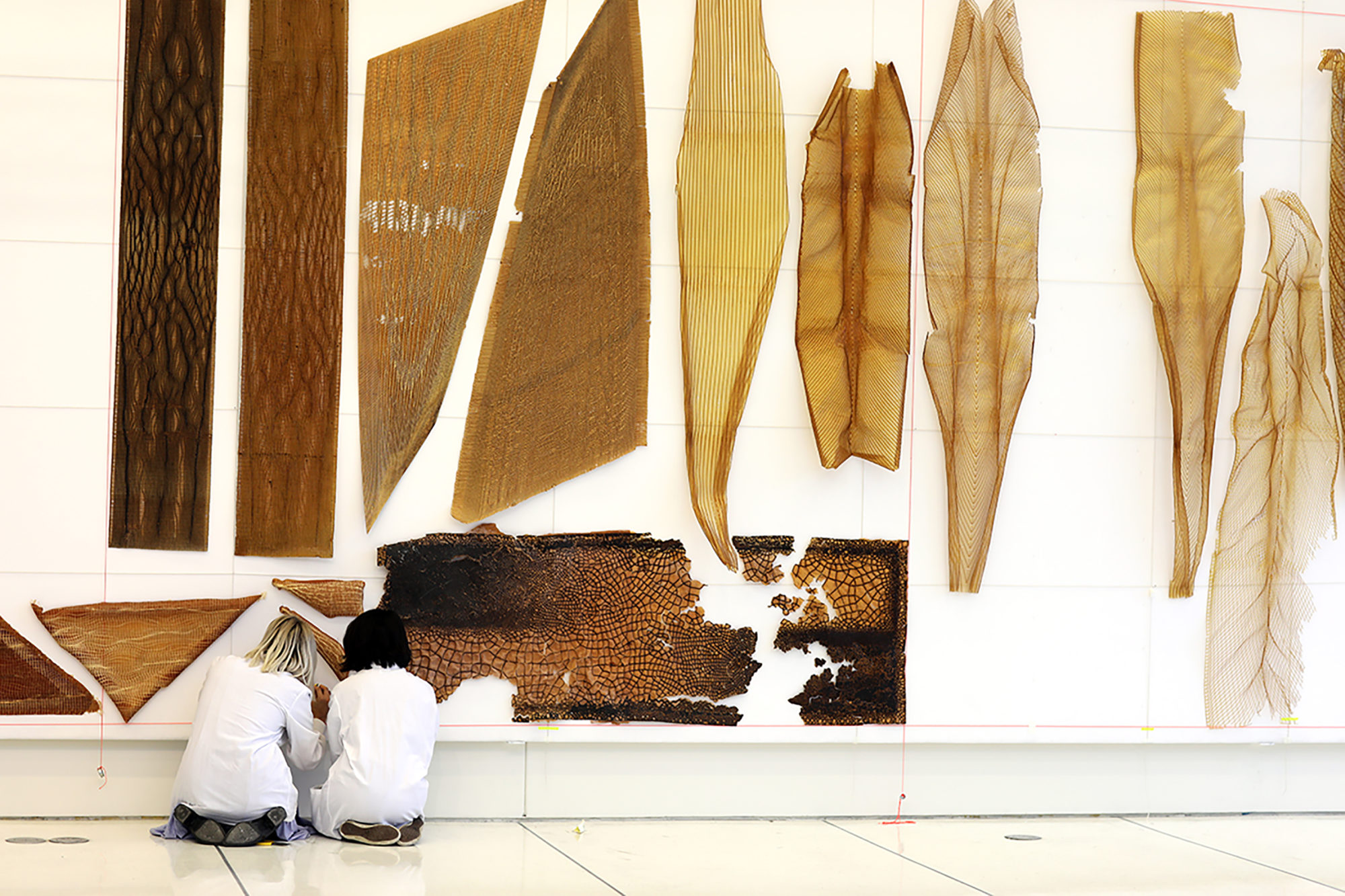
‘Aguahoja l,’ (materials derived from crustaceans and fungi), Photo Courtesy Neri Oxman and the Mediated Matter Group.
VEITCH: What will the future look like?
OXMAN: We need to rethink some of the ideals and values that we have inherited through the modernist tradition and reliving the industrial revolution through the lens of nature as opposed to the machine. Buildings that are alive, in a sense, that contain a neurological system that can sync with a piping or circulatory system. I think of the Centre Pompidou, which was the ultimate vision of the machine coexisting with the garden, as the ultimate example of specialized parts and functions. Is there a way to reinterpret Pompidou so that it’s organ-behaving? As a building with no components or partitions, but instead a single unit?
VEITCH: You’ve emphasized how collaborative your process is. What’s something that makes the people on your team suited to this kind of work?
OXMAN: Part of what makes our crazy, wonderful team so special is that, in a way, each of us transforms into the organisms that we work with. For us, there is something that exists beyond the perception of science as ultra-rational. In order to truly understand how a silkworm builds and how to communicate with it, we develop a sort of intuition regarding the silkworm and her ways. There’s a student on my team who goes up to the roof, where we keep our bees—I can’t even tell you how many hives we have—and allows himself to be completely surrounded by them. By now, he himself is a bee.
VEITCH: No fear?
OXMAN: No fear.
VEITCH: Have we destroyed the planet completely?
OXMAN: Not completely. Never completely. But we’re extremely close to the end of nature as we know it. That’s why I preach that we transform our relationship with nature. We, as designers and architects of the built environment, are entering an era where we’re designing for survival. This is the first time I’ve said something like this, but we’re also designing for a time where we will no longer exist, so that nature can continue her existence without us.

